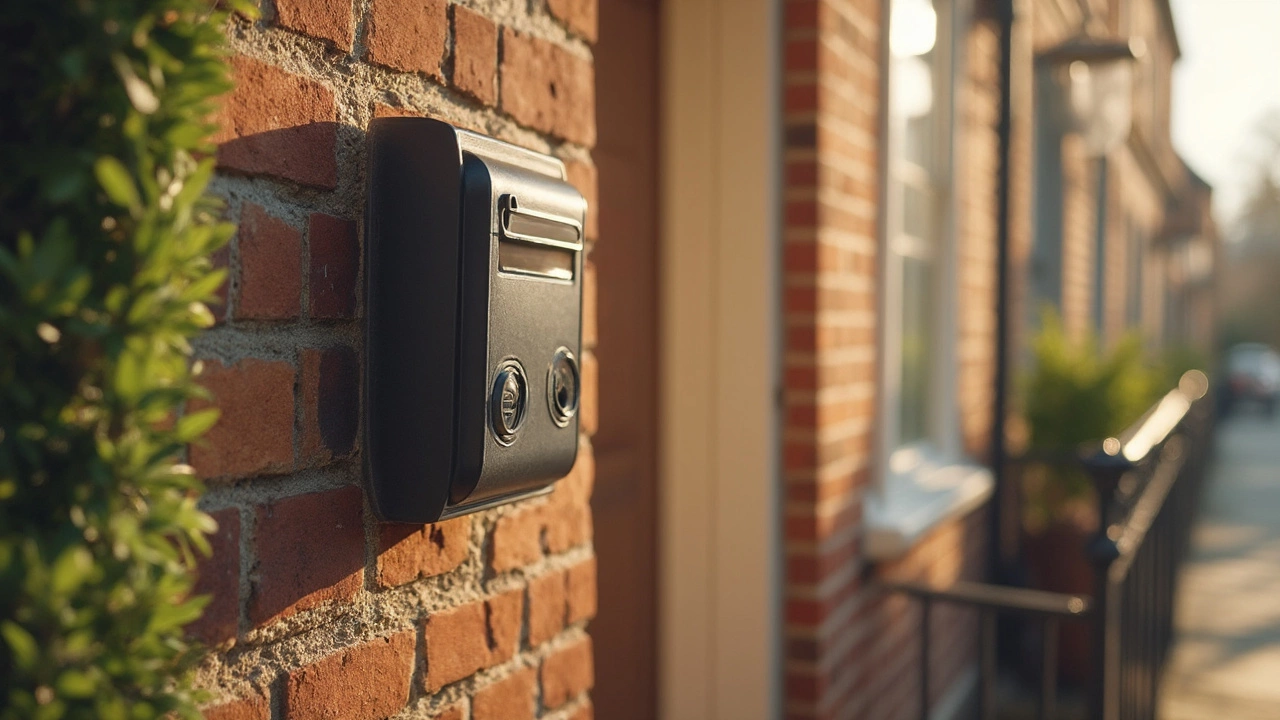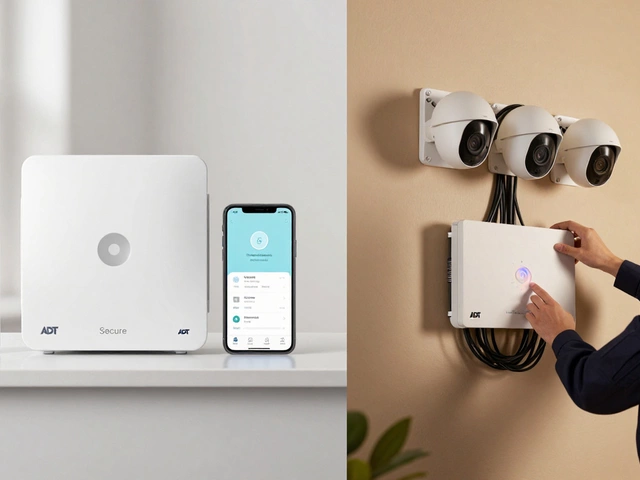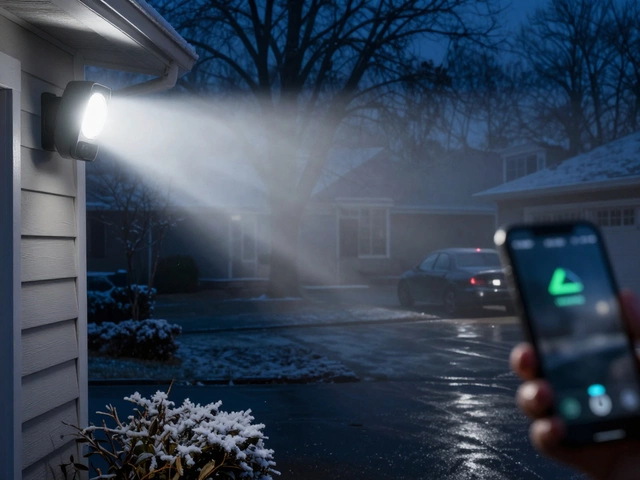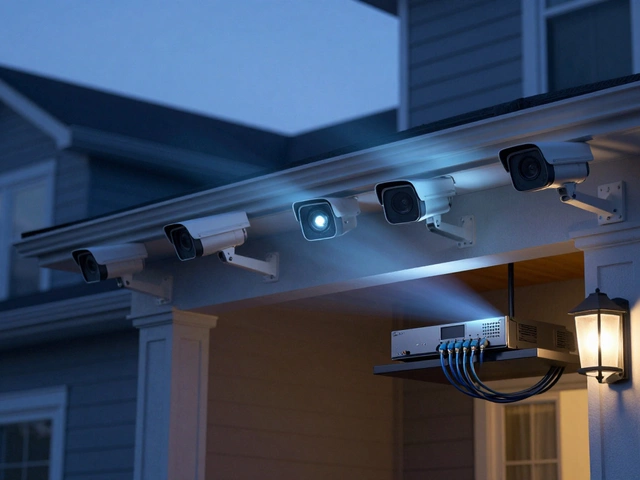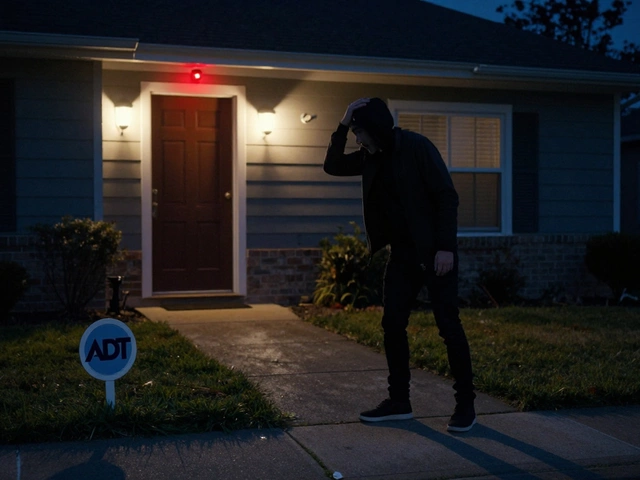If you've ever stopped to think about how a video doorbell is powered, you're not the only one. You can't exactly just hang it on your front door and call it good—these gadgets have cameras, motion sensors, and sometimes even night vision. All of that takes some kind of power, and if you get it wrong, your new doorbell is just an expensive knick-knack on the wall.
Here's the bottom line: video doorbells usually get their power in one of two main ways. Some are hardwired right into your home's existing doorbell system, using the same low-voltage wires from way back when. Others skip the wires and run entirely on built-in rechargeable batteries (and sometimes disposable ones). A few can even do both, giving you options if your house is newer or if you're renting and can't go drilling into walls.
Getting the power source right is a big deal. Pick the wrong type for your setup, and you'll be running outside to recharge your doorbell every few weeks—or worse, calling in an electrician when you weren't expecting to. So before you hit "buy now" on that shiny new video doorbell, let's dig into exactly how these devices get powered up.
- What Powers a Doorbell, Anyway?
- Hardwired Doorbells: The Classic Setup
- Wireless Doorbells and Built-In Batteries
- Dealing with Homes Without a Doorbell
- Power Problems and How to Handle Them
- What to Know Before You Buy
What Powers a Doorbell, Anyway?
This is way simpler than you might think. Every video doorbell needs a steady source of power to work. Usually, you've got two main choices: wired or wireless (battery-powered). The way you get that power totally changes your setup experience—and even how often you have to mess with your doorbell after it's on your wall.
If your house already has a classic chime doorbell, you've probably got low-voltage wires running to the front door. Most traditional doorbells use something between 16 and 24 volts of AC power. It's not enough to zap you, but it is enough to keep a smart doorbell running full-time, recording video, and pushing notifications to your phone. The best part? As long as the wires are in good shape, you rarely have to think about power again. No digging around for chargers, no dead batteries.
Now, not everyone lives in an older place with existing wiring. In new homes and apartments—and especially rentals—those wires might be missing or buried behind a wall somewhere. That's where battery-powered video doorbells come in. These run on lithium-ion batteries that you pop out and recharge every month or two (depending on how much action your front door gets). Some brands, like Ring or Arlo, use removable battery packs. That makes it easy to swap a dead one for a fresh one if you want zero downtime.
If you're curious about how power setups break down across different doorbells, check out this simple comparison:
| Power Type | Common Voltage (if wired) | Who Should Use It? |
|---|---|---|
| Hardwired | 16-24V AC | Homes with existing doorbell wiring |
| Battery Powered | N/A | Homes/rentals with no wiring or no access |
| Dual Power | 16-24V AC & Battery Backup | Anyone who wants both options |
The key thing here: before you even shop for a new video doorbell, figure out what kind of power source you can actually use. If you skip this step, you could end up with a doorbell that just won’t work for your place—or worse, a device you have to recharge every other week because you picked the wrong model.
Hardwired Doorbells: The Classic Setup
The tried-and-true way to power your video doorbell is by wiring it right into your house’s existing doorbell system. Most American homes built after the 1960s have these low-voltage wires already in place at the front door. So if you’ve got a regular push-button doorbell, odds are you can hook up a smart model without much fuss.
Here’s how it works: the original doorbell wiring usually carries between 16 and 24 volts, using a transformer—usually tucked away near your breaker box or chime. This low-voltage power is perfect for running a modern hardwired doorbell because it keeps things safe and steady. Most of the top-rated brands like Ring, Nest, and Arlo specifically call for this voltage range.
“Hardwired connections deliver continuous power, so homeowners never have to worry about their doorbell camera losing charge or missing important alerts.” — SafeWise Smart Home Guide, 2024
There are a few reasons people stick with wired options:
- It’s always on. So you get round-the-clock video and the doorbell never needs charging.
- Fewer battery swaps. You don’t have to take it down every few weeks to juice it up.
- The existing chime still works. Most hardwired video doorbells trigger your home’s original doorbell chime, which is great if you like to actually hear the doorbell inside.
If you’re handy with a screwdriver and a voltage tester, swapping in a new smart doorbell can sometimes take just 15-30 minutes. Want a rough look at how the process goes?
- Turn off power at the breaker to stay safe.
- Take off the old doorbell and disconnect those two low-voltage wires.
- Hook the wires up to your new video doorbell using the screw terminals or clips provided.
- Mount the new unit and restore power to test it out.
If you’re worried about DIY, you can always call in an electrician, but most folks find this job less intimidating than they expected—especially with the right YouTube video.
One quick heads-up: if your home is really old and doesn’t have wiring up front, or if your transformer is too weak, you might need some upgrades to get things working smoothly. Here’s a quick comparison of popular hardwired models and their power needs:
| Brand | Voltage Needed | Features |
|---|---|---|
| Ring Video Doorbell Pro | 16-24V AC | 1080p, Alexa support |
| Nest Doorbell (Wired) | 16-24V AC | HDR, Google Home |
| Arlo Essential Wired | 16-24V AC | Night vision, HD video |
Making the most of your existing wiring is usually the easiest way to keep your doorbell power worries to a minimum. If you’re already set up for it, going with a hardwired video doorbell is kind of a no-brainer.
Wireless Doorbells and Built-In Batteries
If you’re looking for easy installation and hate messing with wires, wireless doorbells with built-in batteries are probably your best bet. These models are super popular for renters, apartment folks, and anyone who doesn’t want to call an electrician.
Here’s how it works: the video doorbell has a rechargeable battery inside. You set it up anywhere near your door—usually with a couple of screws or even double-sided tape. The battery powers the camera, the chime, and all the smart features. When it starts running low, you pop the doorbell off its mount and charge it with a regular USB cable for a few hours. Some brands even let you swap out batteries, so you always keep one charging as backup.
Most wireless doorbells—including big names like Ring, Arlo, and Eufy—last anywhere from a couple of months to six months on a charge. It depends on how busy your front door is. More motion triggers, more deliveries, and more visitors mean you’ll have to charge it more often.
| Brand | Typical Battery Life |
|---|---|
| Ring Video Doorbell 4 | 3-6 months |
| Eufy Video Doorbell 2K | 4-6 months |
| Arlo Essential Wire-Free | 3-6 months |
One thing to know: battery performance drops in freezing weather. If you’re in a place where winters get brutal, keep an eye on the battery or plan to charge more often. If you travel a lot or just don’t want more stuff to remember, look for models that send you real-time alerts on your phone when battery levels get low.
Wireless video doorbells are also perfect for homes without existing doorbell wiring. You just need a spot with Wi-Fi. They’re also quick to uninstall, so if you move, your doorbell comes with you—no hassle.
Setup tips:
- Mount the doorbell where Wi-Fi is strong (use a speed test app near your door if you’re unsure).
- Keep a backup battery charged (if your model allows swapping).
- Check the app settings to adjust motion zones and alerts—less false alarms mean longer battery life.
Battery-powered doorbells are all about convenience, but just remember: the freedom from wires means you trade a little bit of your time to recharge every so often.

Dealing with Homes Without a Doorbell
So your house never had a doorbell, or maybe the old one was removed before you moved in. That’s actually more common than you’d think, especially in apartments, townhouses, or older homes. The good news? You don’t need to start chiseling into walls or running new wires just to install a video doorbell.
Most people in this spot pick one of these routes:
- Battery-powered doorbells: These are plug-and-play. The battery goes inside the unit, so you just stick the doorbell by your front door (usually with strong adhesive or a screw) and pair it with the app. No wiring. You just recharge the battery every couple months, or swap it out for a fresh one—super simple.
- Plug-in transformer (adapter): A handful of doorbell power kits let you power a video doorbell by plugging into a regular wall outlet. You run a skinny wire (usually 18- to 24-gauge, nothing wild) out the window or through a small hole, hook it up to the doorbell, and you’re done. It looks cleaner than it sounds and no pro required.
If you’re not sure which to go with, here’s a quick look at what folks care about the most:
| Option | DIY-Friendly? | How Often to Recharge? |
|---|---|---|
| Battery-powered | Yes | Every 1-6 months |
| Plug-in transformer | Yes (basic tools) | Never (always plugged in) |
One heads-up if you’re in a place with weather extremes—most battery doorbells handle rain, but freezing temps may mean you’ll need to charge them more often. If running a power wire is doable, a plug-in transformer is set-it-and-forget-it. Your dog Rex isn’t going to chew up a hidden wire, but you might want to avoid messy cables near a busy entryway.
Long story short? If your house has zero doorbell power setup now, modern video doorbell models are built for you. You can get going with basic tools and a smartphone, no handyman needed.
Power Problems and How to Handle Them
Annoyed with your video doorbell not charging, dying fast, or simply not working at all? You’re not alone. Power issues are some of the most common headaches people deal with. But the good news: most fixes are straightforward—even if you’re not super handy.
If you have a hardwired doorbell and it keeps cutting out, the first thing to check is your transformer. Most older homes still use the original transformer—sometimes it just can’t handle the extra juice modern video doorbells need. Video models usually want 16-24 volts, but some old-school transformers only deliver 10V. Here’s a quick reality check:
| Doorbell Type | Voltage Needed |
|---|---|
| Old Wired Doorbell | 8-16V |
| Most Video Doorbells | 16-24V |
If the voltage isn’t high enough, your video doorbell might ring, but the camera and Wi-Fi won’t fire up. You can test your transformer with a cheap multimeter. If it’s underpowered, replacement transformers are under $20 at any hardware store. Just turn off the breaker before swapping it out—electrical shocks aren’t fun.
Batteries acting up? A lot of wireless doorbells use lithium-ion batteries, which can weaken over time or in cold weather. If your doorbell dies after a few days, try these:
- Move your Wi-Fi router closer. Weak signals drain batteries fast since your doorbell keeps trying to reconnect.
- Update the firmware if your app says there’s an update. Sometimes, battery bugs get squashed with software fixes.
- Pick up a spare battery, so you can always swap quickly—big plus if you’re forgetful or busy.
If your doorbell constantly flashes or won’t turn on, double check the wiring. Loose wires are a classic culprit. Also, check for corrosion on wire tips—sometimes a quick clean with a wire brush is all it takes.
Not charging even when wired in? If you’re in an area with freezing winters, the battery may refuse to charge below a certain temp—this is a known limitation with lithium batteries. If that’s your situation, try adding a weather shield or moving the doorbell to a slightly more sheltered spot.
Last tip: If nothing fixes it, reach out to the doorbell’s support. Most of the big brands offer solid troubleshooting, and if your doorbell’s still under warranty, you might score a free replacement.
What to Know Before You Buy
Shopping for a video doorbell sounds simple, but if you want zero headaches, you've got to match the doorbell power type to your home and your needs. The first thing to check is whether you already have a wired doorbell setup. If your house is newer, or maybe you live in an apartment, you might not even have existing wires—don't just guess, pop open your old doorbell chime to look for wires or ask your landlord.
Most hardwired video doorbells need 16 to 24 volts of AC power, and the standard transformer in older homes usually covers it. Battery-powered models can go anywhere, but you'll deal with charging every few months (sometimes more if your front door sees tons of action or cold weather). Some brands, like the Ring Video Doorbell 4 or the Google Nest Doorbell (Battery), give you both hardwired and wireless options.
- Wattage and voltage matter. If the specs on your new doorbell don't match the wires in your house, it might not power on—or worse, you could burn it out.
- Look for compatibility with your app or smart home system. Not every video doorbell talks to Alexa, Google, or Apple HomeKit.
- Check if the doorbell needs extra gear. Some brands sell plug-in chimes or power adapters separately. It gets pricey quick if you don't plan ahead.
- Think about placement. If you don't have wiring at the door you want, a battery model is way easier. Just remember it'll need a full charge out of the box.
Here's a quick look at power needs for the most popular models right now:
| Brand/Model | Power Options | Battery Life (approx.) |
|---|---|---|
| Ring Video Doorbell 4 | Hardwired or Rechargeable Battery | 3-6 months |
| Google Nest Doorbell (Battery) | Hardwired or Built-in Battery | 2-5 months |
| Arlo Essential Video Doorbell | Hardwired or Rechargeable Battery | 3-6 months |
| Eufy Video Doorbell 2K | Battery (wired for continuous charging) | 4-6 months |
The main takeaway? Figure out what power options you have at home, check the voltage, and consider your willingness to charge batteries. Some battery-powered models need a screwdriver to swap the battery, others just pop right out. If you aren't sure about your wiring, snap a pic and ask someone at the hardware store—they've seen it all. And don't forget: cold weather drains batteries much faster, so if you live somewhere chilly (like I do, walking Rex before dawn in December), plan for more frequent charges or go hardwired if you can.

